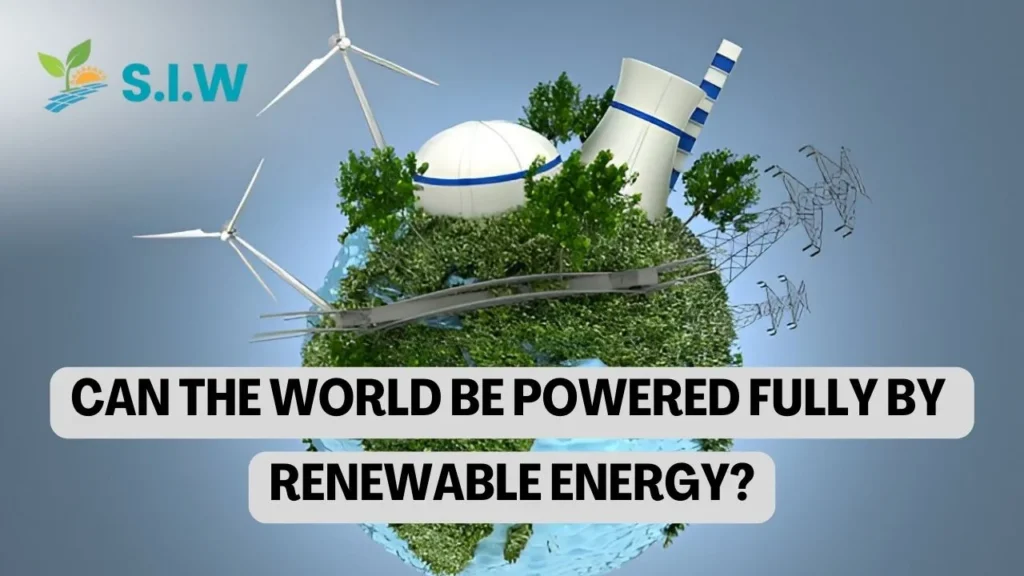In the face of escalating climate change and depleting fossil fuels, the global transition to renewable energy is not just a goal but an imperative. This article explores whether the world can be powered fully by renewable energy and the pathways to achieving this ambitious objective.
Understanding Renewable Energy Sources
Renewable energy is derived from natural processes that are replenished constantly. The primary sources include solar, wind, hydro, geothermal, and biomass energy. Each of these sources plays a crucial role in the global energy mix:
- Solar Energy: Harnessing the power of the sun, solar panels convert sunlight into electricity. This energy source is abundant and available worldwide, making it a cornerstone of the renewable energy revolution.
- Wind Energy: Wind turbines capture the kinetic energy of wind and convert it into electricity. Wind farms, both onshore and offshore, have become a significant contributor to the energy grid.
- Hydroelectric Power: By utilizing the energy of flowing water, hydroelectric plants generate electricity. This source is highly reliable, particularly in regions with abundant water resources.
- Geothermal Energy: Geothermal energy taps into the Earth’s internal heat to produce electricity and provide direct heating. It is a stable and sustainable energy source, particularly in volcanic regions.
- Biomass Energy: Biomass energy is produced from organic materials, such as wood, agricultural residues, and animal waste. It can be used directly for heating or converted into biofuels for electricity generation and transportation.
The Feasibility of a Fully Renewable Energy-Powered World
Technological Advancements and Innovations
The rapid development of technology has significantly enhanced the efficiency and affordability of renewable energy systems. Solar panels are now more efficient and less expensive than ever before. Wind turbines have grown in size and capacity, making wind energy increasingly viable. Additionally, innovations in energy storage, such as lithium-ion batteries and pumped hydro storage, have addressed the intermittency issues associated with renewable energy sources.
Economic Considerations
The cost of renewable energy has decreased dramatically over the past decade. Solar and wind power are now often cheaper than coal and natural gas in many regions. As investment in renewable infrastructure increases, economies of scale will likely drive costs down further. Moreover, the renewable energy sector creates jobs, stimulates economic growth, and reduces the financial risks associated with fossil fuel dependence.
Environmental and Social Impact
Renewable energy sources offer significant environmental benefits, including reduced greenhouse gas emissions, lower air pollution, and decreased reliance on water resources. Additionally, the decentralized nature of renewable energy systems can empower communities by providing energy access in remote and underserved areas. This shift can lead to greater energy equity and resilience in the face of natural disasters and other disruptions.
Challenges and Barriers
Despite the promising potential of renewable energy, several challenges must be addressed to achieve a fully renewable-powered world:
- Energy Storage and Grid Integration: The intermittency of solar and wind energy requires effective storage solutions and smart grid technologies to ensure a reliable energy supply.
- Infrastructure Development: Transitioning to renewable energy requires substantial investment in infrastructure, including transmission lines, energy storage facilities, and renewable energy plants.
- Policy and Regulatory Support: Government policies and regulations play a critical role in fostering the adoption of renewable energy. Supportive policies, such as subsidies, tax incentives, and renewable energy mandates, are essential for driving the transition.
- Public Perception and Social Acceptance: Public support is crucial for the widespread adoption of renewable energy. Education and awareness campaigns are necessary to address misconceptions and promote the benefits of renewable energy.
Global Efforts and Success Stories
Several countries and regions have made significant strides toward achieving 100% renewable energy:
- Iceland: Iceland generates nearly all of its electricity from renewable sources, primarily hydropower and geothermal energy.
- Costa Rica: Costa Rica has achieved over 98% of its electricity generation from renewable sources, demonstrating the feasibility of a renewable-powered grid in a developing country.
- Germany: Germany’s Energiewende (energy transition) aims to phase out nuclear power and fossil fuels, with a target of 80% renewable electricity by 2050.
These examples demonstrate that a fully renewable energy-powered world is not only possible but already being realized in some regions.
The Path Forward: Strategies for a Renewable Future
Investing in Research and Development
Continued investment in research and development is essential for advancing renewable energy technologies. Innovations in energy storage, grid management, and renewable energy generation can overcome current limitations and accelerate the transition to a fully renewable energy system.
Enhancing Energy Efficiency
Improving energy efficiency across all sectors is critical to reducing overall energy demand and maximizing the benefits of renewable energy. Energy-efficient buildings, transportation, and industrial processes can significantly lower the energy required to power our world.
Promoting Global Collaboration
Achieving a fully renewable-powered world requires global cooperation. Countries must work together to share knowledge, technology, and resources. International agreements, such as the Paris Agreement, play a vital role in coordinating global efforts to combat climate change and promote renewable energy.
Empowering Communities
Local communities play a vital role in the transition to renewable energy. Community-owned renewable energy projects can drive local economic development, increase energy independence, and foster social acceptance of renewable technologies.
Implementing Policy and Regulatory Frameworks
Governments must implement strong policy and regulatory frameworks to support the growth of renewable energy. This includes setting ambitious renewable energy targets, providing financial incentives, and removing barriers to renewable energy development.
Conclusion
The vision of a world powered fully by renewable energy is within reach. With continued technological advancements, supportive policies, and global collaboration, we can overcome the challenges and build a sustainable future for all. The transition to renewable energy is not just an environmental necessity; it is an opportunity to create a more equitable, resilient, and prosperous world.








